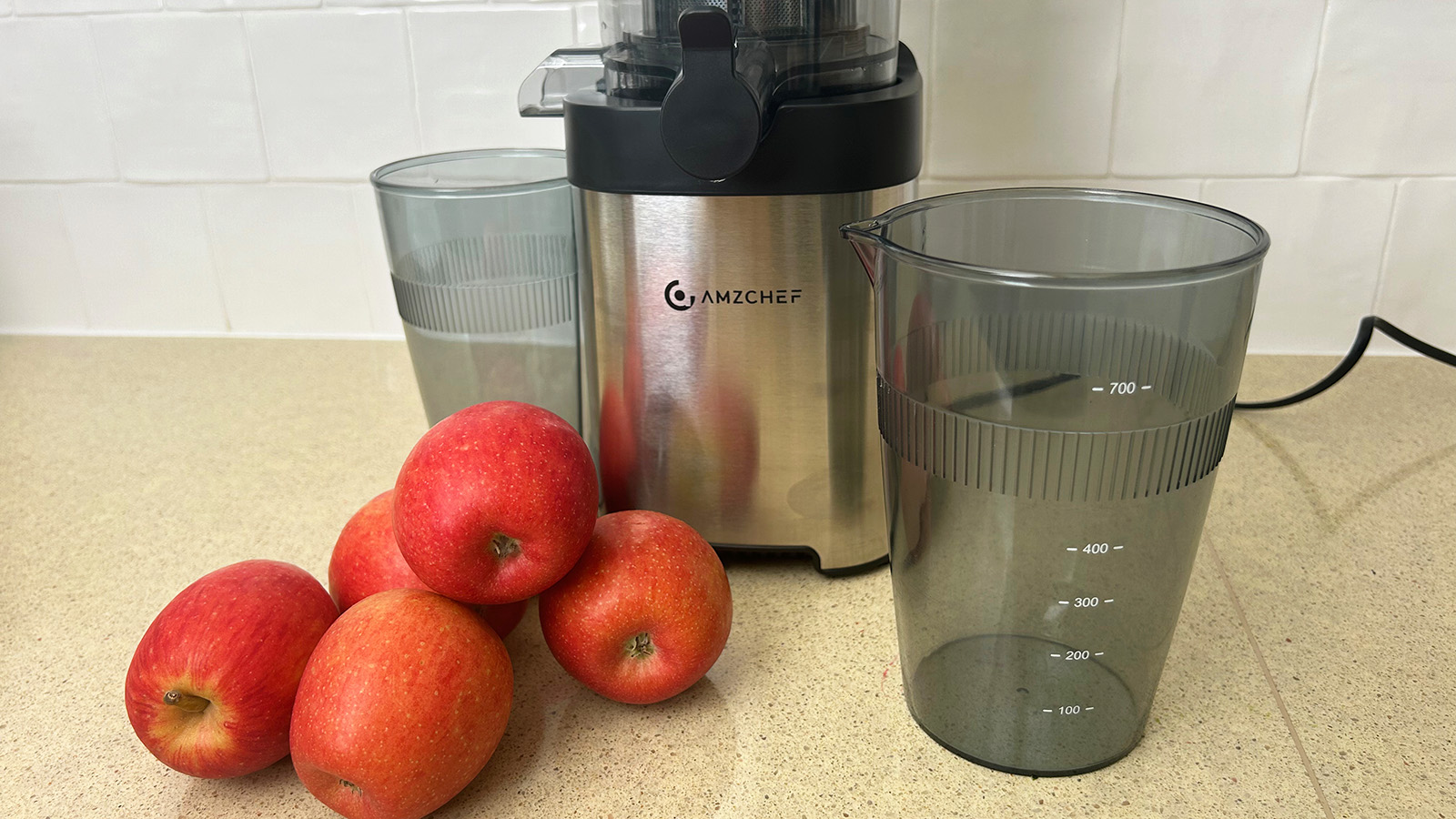
Product name: AMZCHEF Cold Press Juicer ZM1902
Dimensions: 16.3 x 5.8 x 7.1inches
Feed chute: 5.2inch
Type: Masticating
Wattage: 180W
RPM: 50-60
There are several reasons why hardcore juice enthusiasts prefer cold press juicers, including higher juice yields and better nutrient retention than centrifugal juicers. But the price of cold press juicers is often prohibitive, and you could easily spend $500 finding a good option. That's why I was intrigured to review the AMZCHEF Cold Press Juicer ZM1902, which is surprisingly budget friendly in comparison to many other models at around $150.
Having reviewed countless juicers over the years, I often struggle to understand how the high price of the best juicers is justifiable. But then again, I also hate food waste, so if I was a daily juicer, I would want an efficient juicer that minimizes the waste pulp. I’m hoping this juicer might strike the right balance between affordability and performance.
I tested this juicer in my own home, juicing all sorts of fruit and vegetables to figure out how well it juices them as well as how much waste is produced. It’s not the best juicer I’ve tried, but for the price, I think you'll struggle to find a better cold press juicer. If you want a healthy juicer that you can trust to get the job done without costing a small fortune, this is a great option.
AMZCHEF Cold Press Juicer review: Price and availability
The list price is given as $199.99 but at the time of testing, the AMZCHEF (ZM1902B) cold press juicer was on sale for $129.99 on Amazon. In fact, you'll almost always find this juicer on some sort of promotion. This makes it a very affordable option if you’re looking for a cold press juicer.
It's also worth noting that I tested the most expensive iteration of this juicer, the ZM1902B. If you're happy to opt for a smaller feeding chute, the 3.1-inch feed chute option is $100 at Amazon.
Top of the range models like the Nama J3 will set you back around $450. So this AMZCHEF cold press juicer is within reach for those with a tighter budget.
AMZCHEF Cold Press Juicer review: Design
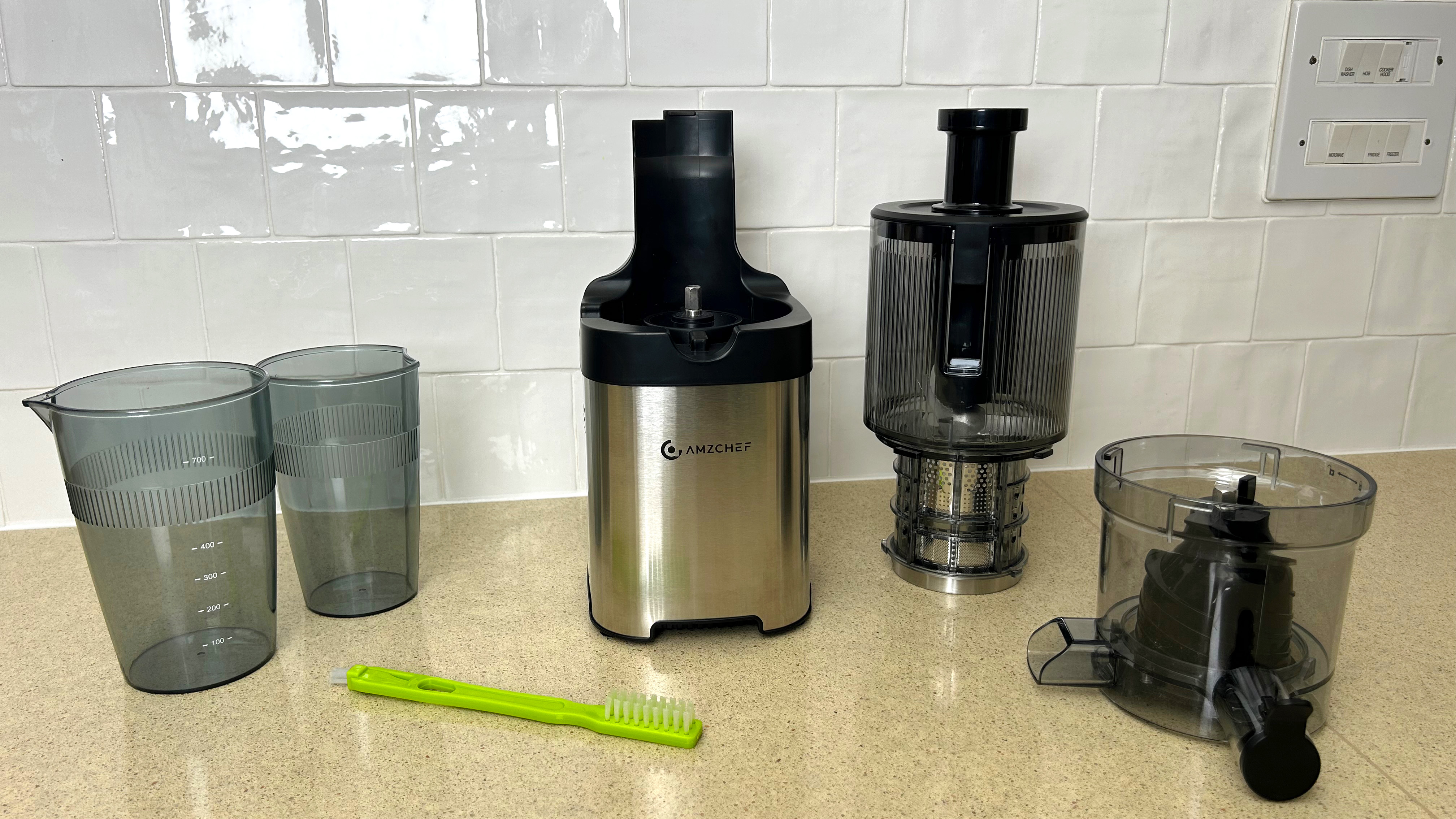
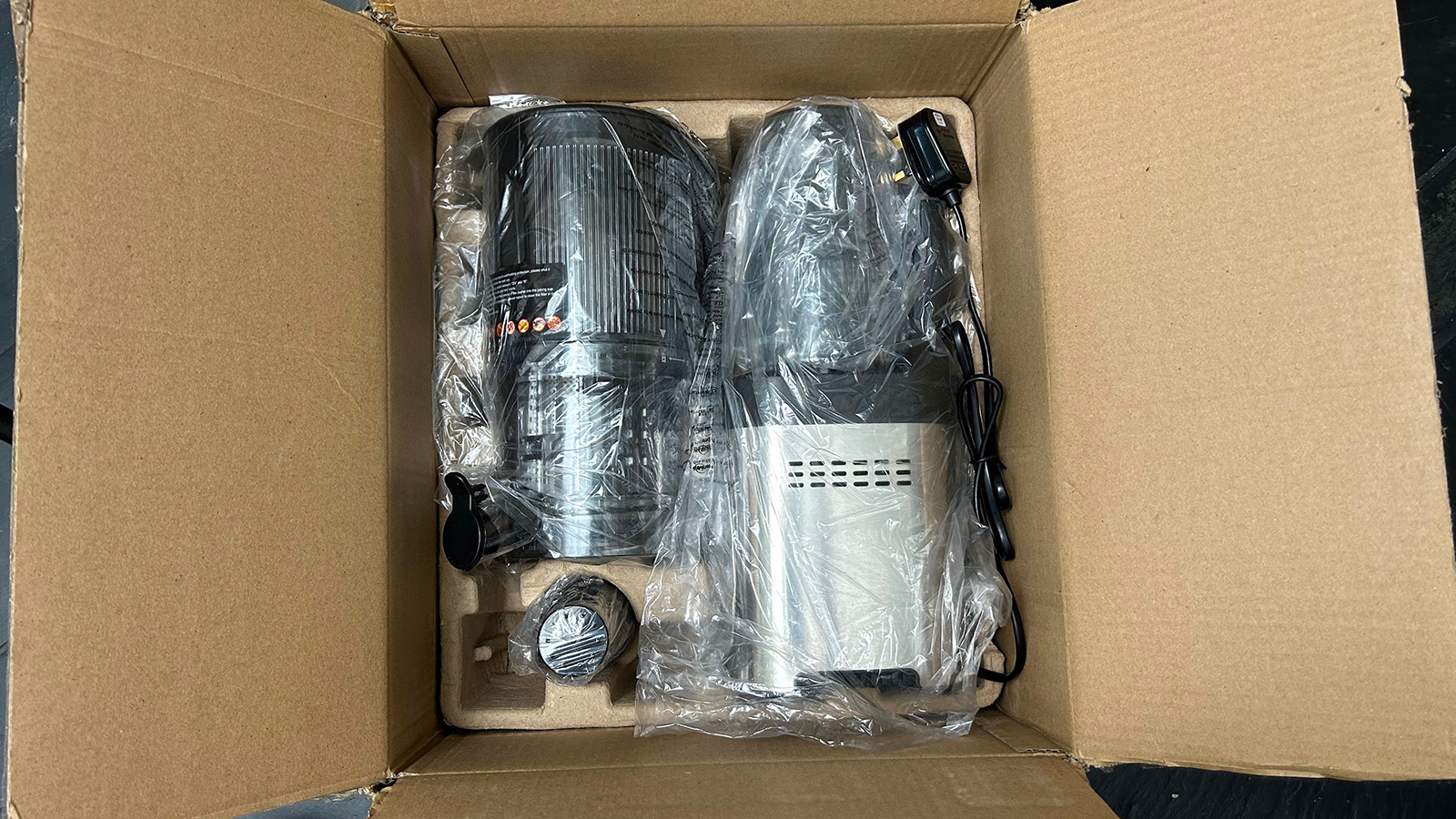
The AMZCHEF (ZM1902B) cold press juicer has a small footprint so it won't take up too much space on your counter. It is tall though, so if you’re looking to use it beneath a wall cupboard, you might want to pay attention to how much space you have to play with.
On the whole, cold press juicers are not known for their simple, easy assembly. The AMZCHEF (ZM1902B) cold press juicer isn’t too tricky to put together though. There are just three main removable sections that slot on to the base in sequence. Once you’ve mastered how these go together, it’s very simple.
The main feeding container is the top piece and it has a flip-up lid that allows you to fill up the container with your raw ingredients, rather than having to laboriously feed them in one-by-one. Additionally it comes with a pusher so that once the lid is closed you can insert the pusher to help it all along a bit.
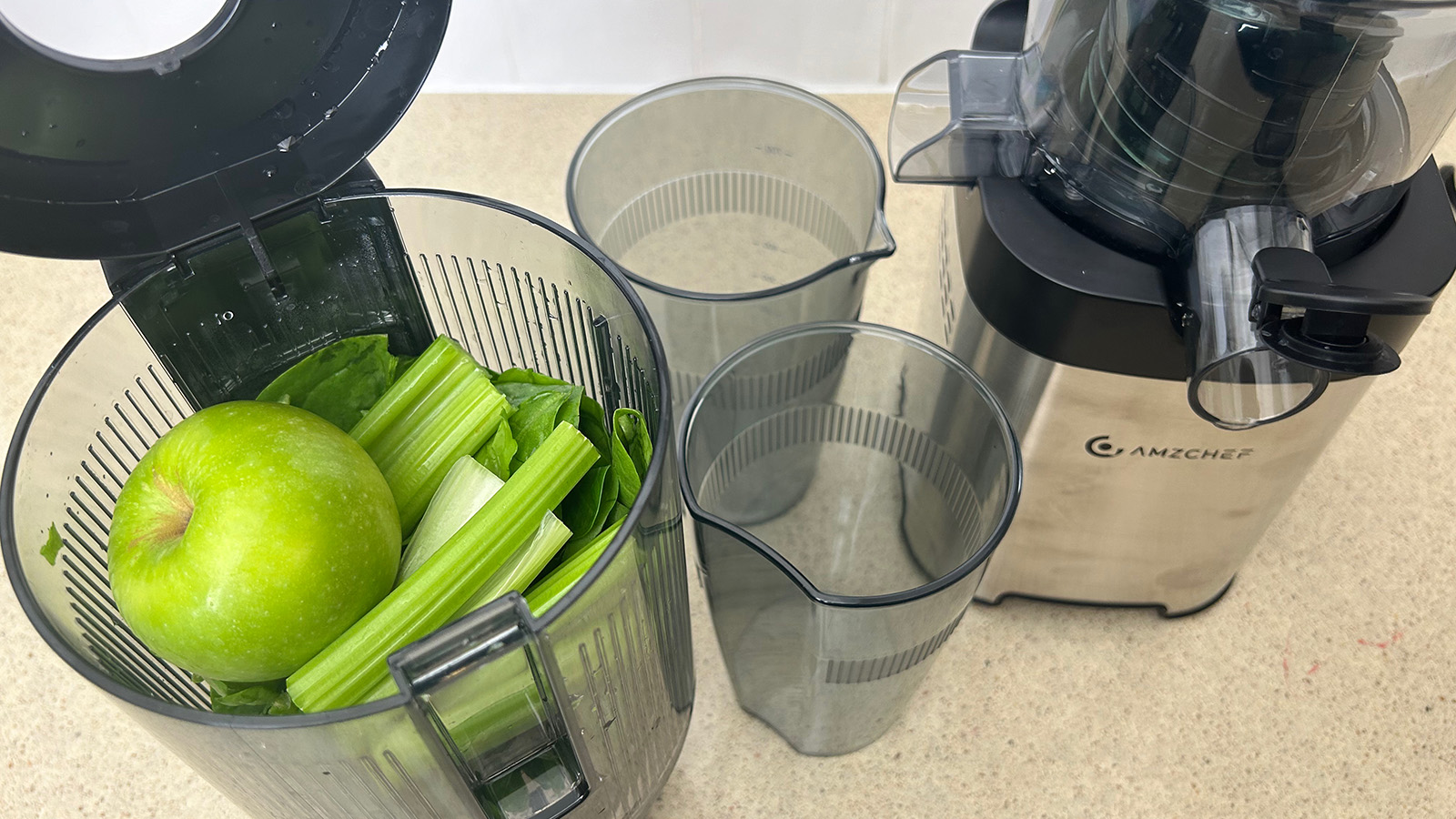
One of the great features of this juicer is the 5.2 inch opening that easily accommodates whole apples. Many cold press juicers require you to cut all fruit and veg into small pieces before juicing, so this is a welcome feature.
One feature that I instantly found annoying is that if you have the juice spout facing towards the front of the counter, with the pulp container to the left, it means the start/ stop switch is round the back.
So you either have to lean round to look at the switch, which has an ‘on’ or a ‘reverse’ mode. Or, you have to place the juicer so that the switch is more visible. Though to be fair, after a couple of uses, I instinctively knew which way to press the button without actually looking at it. So maybe it’s only annoying the first few times you use it.
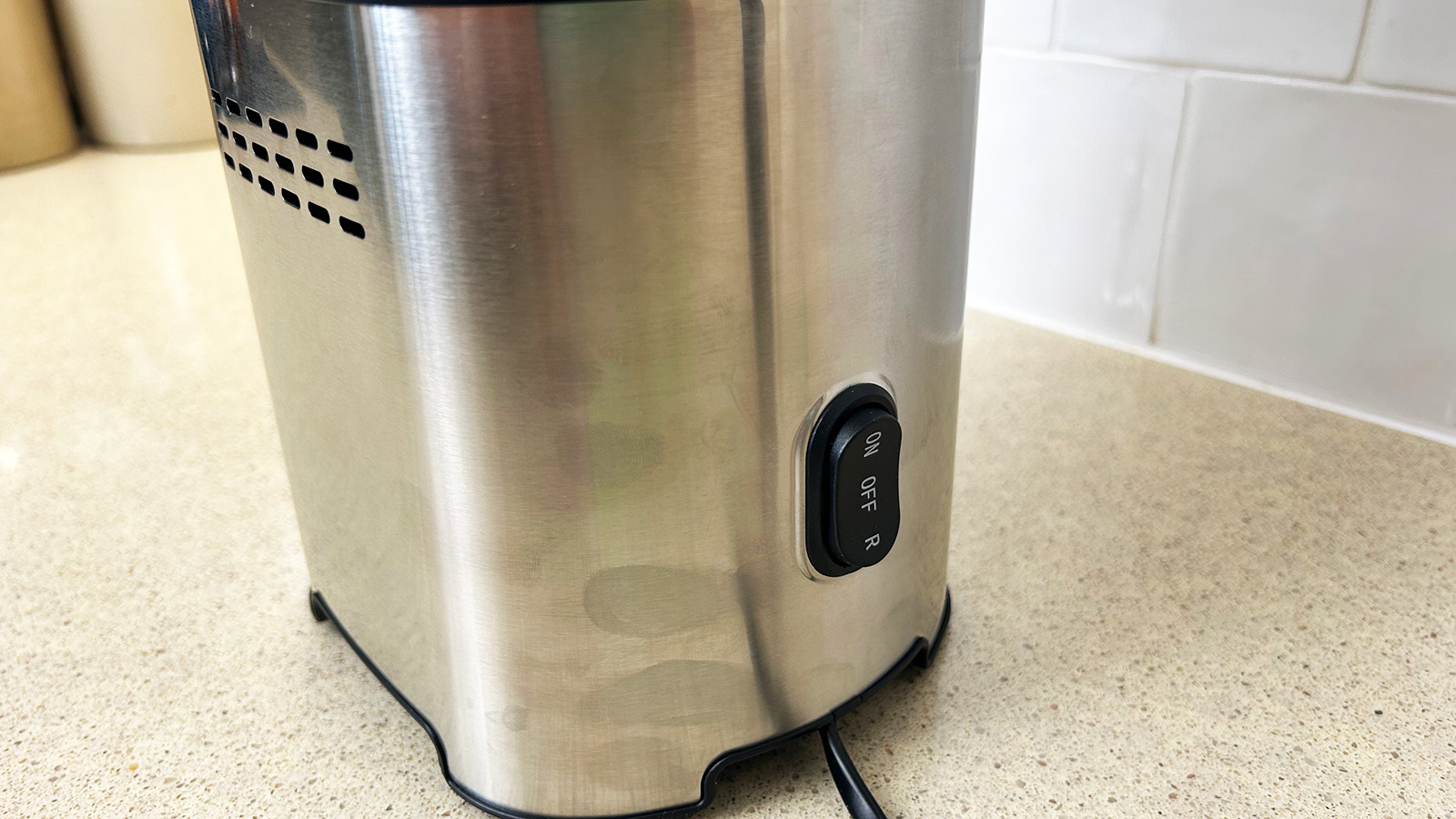
The juice spout is 6 ¼ inches/16cm from the counter, so there’s plenty of space to juice directly into your own glass instead of using the supplied juice cup, if you prefer. And the four strong suction feet keep the juicer rooted to the counter even when juicing very hard ingredients.
AMZCHEF Cold Press Juicer review: Performance
Berries
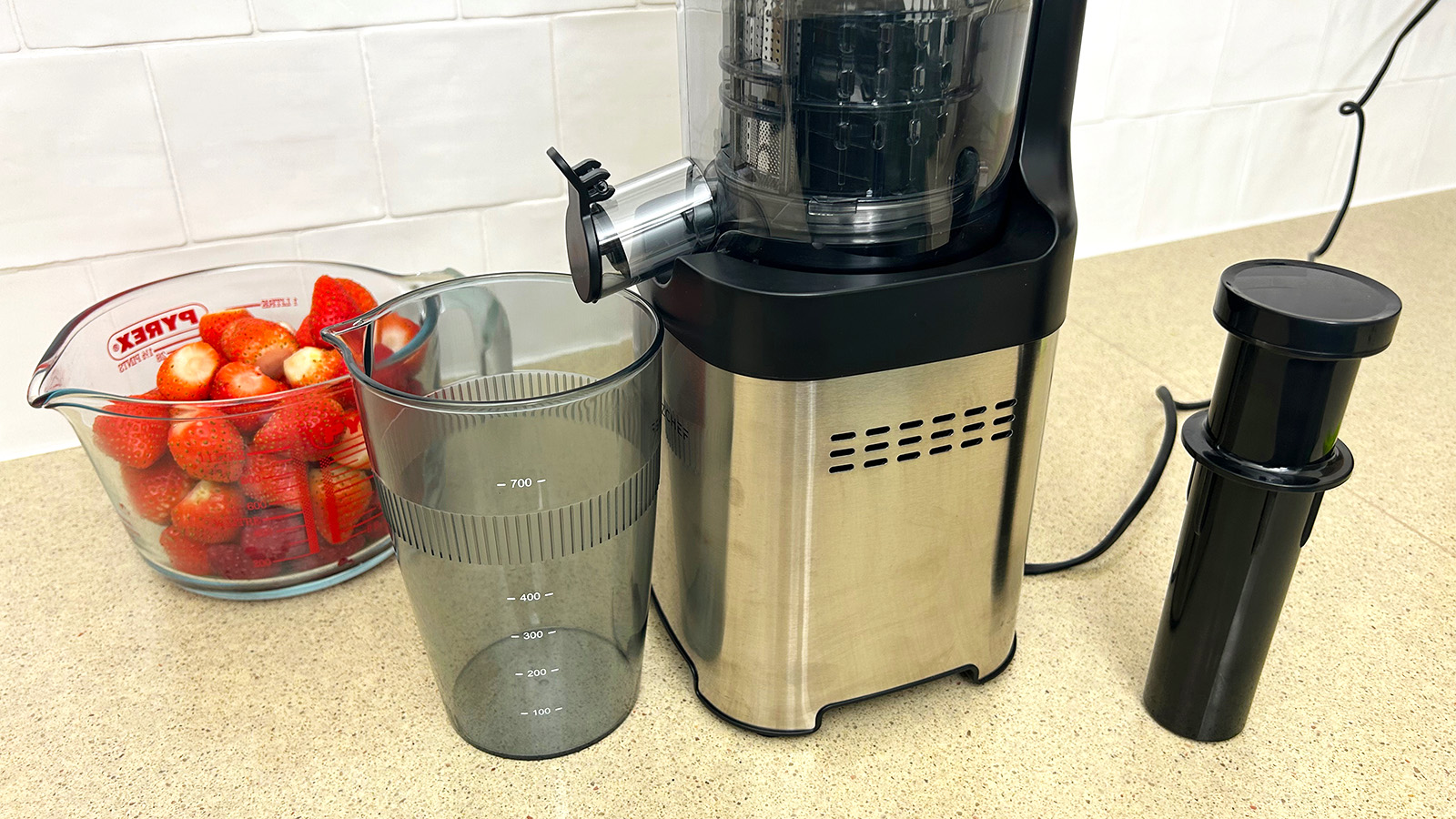
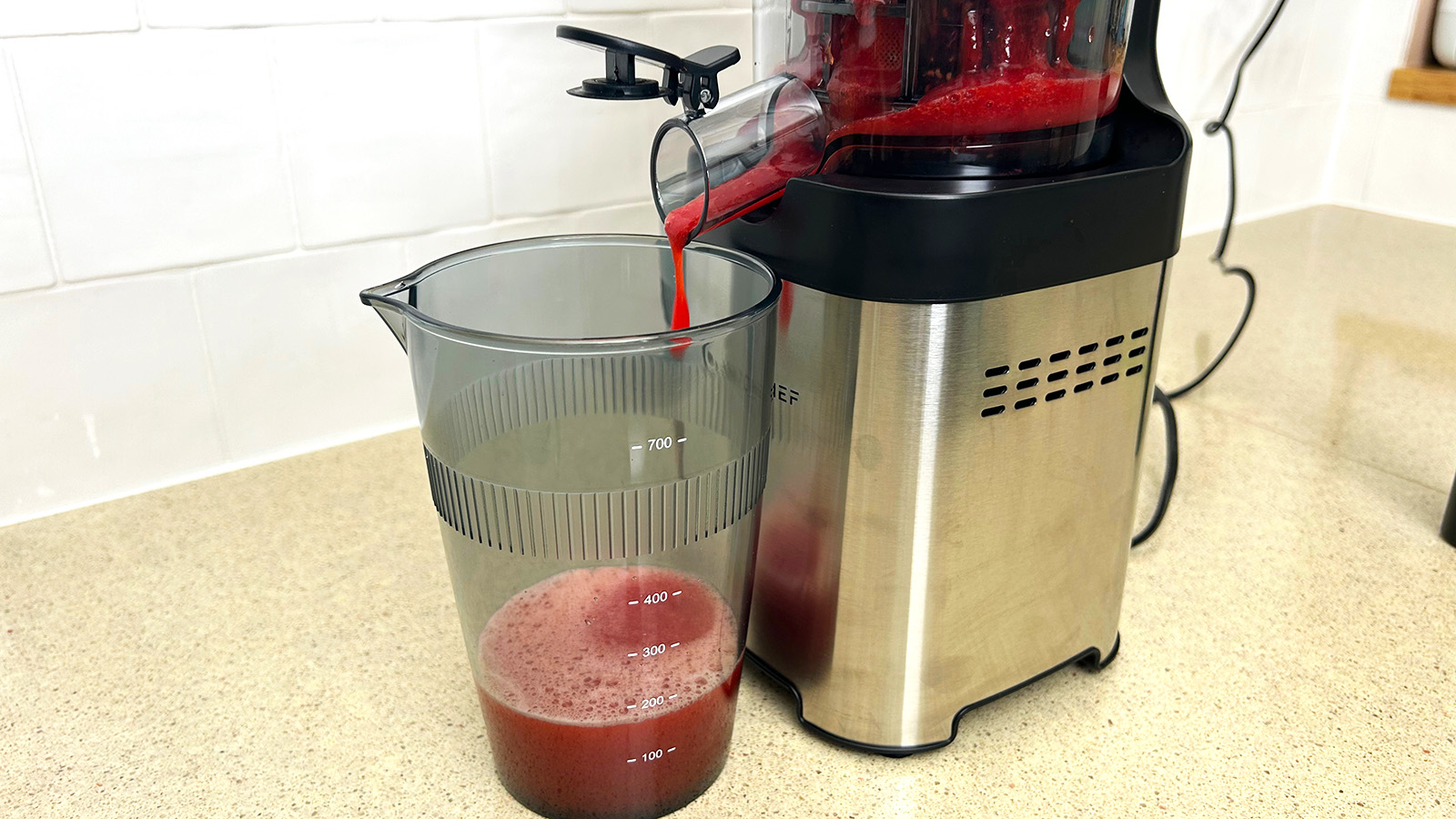
The first thing I tried to juice was strawberries and raspberries. I switched it on and loaded in the whole berries. After 3 minutes the juice had stopped flowing out and was, at this point, just dripping, so this is when I decided to switch it off.
Having added 21.5oz/ 610g whole berries for juicing, I was disappointed that I got less than half that weight back in juice; 9.5oz/ 270g. The leftover pulp was still very wet, so it felt like there was a lot of waste.
The juice itself was deliciously thick, smooth, and froth free. Though I think most people would consider a pure berry juice to be too wasteful to add to their weekly juicing menu.
Orange juice
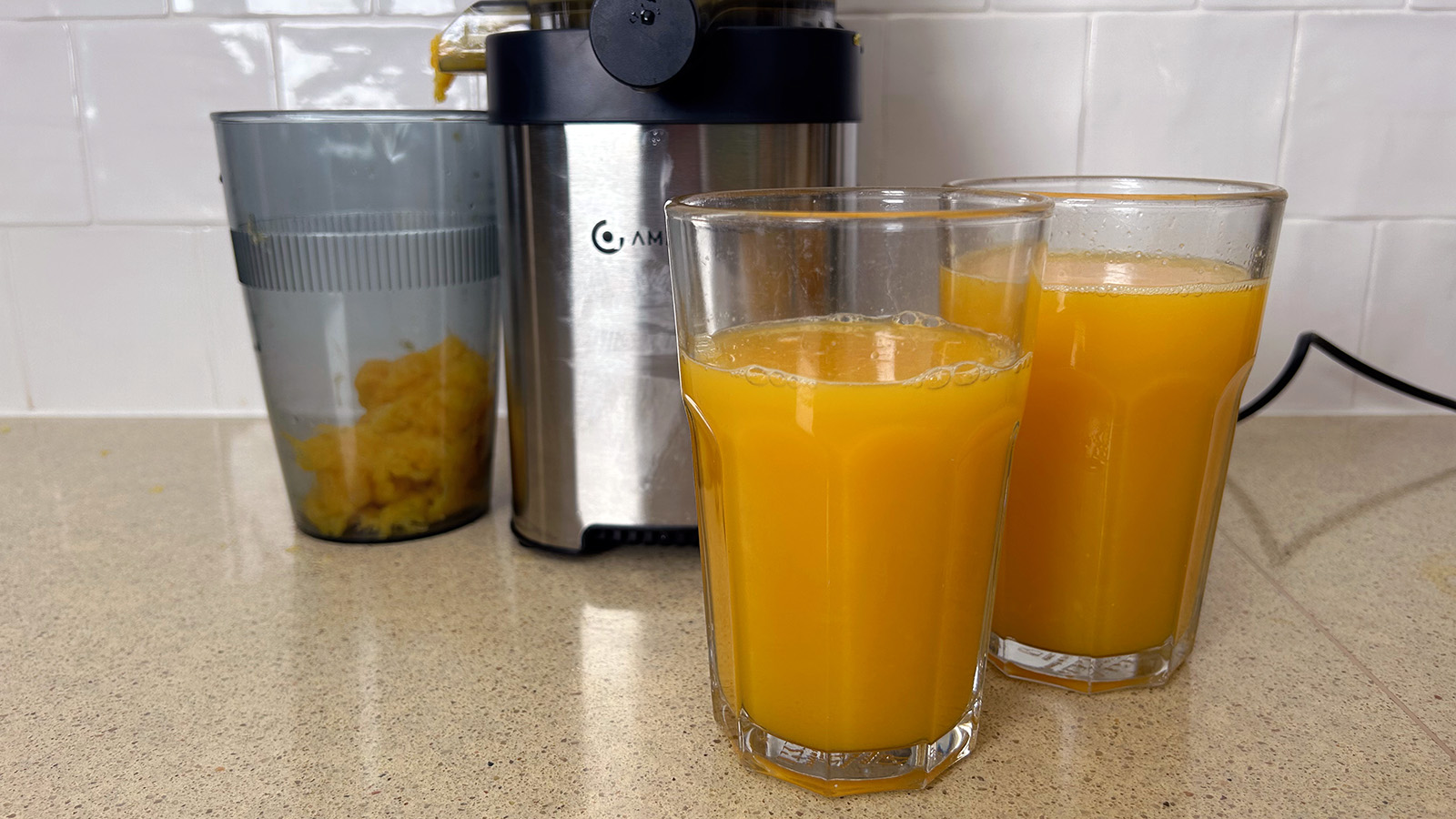
I peeled six oranges and fed them into the feed tube three at a time. The juice yield was a little over 60% and might have been higher but not all the orange made it through the feed tube and auger. I had to keep stopping it to push everything through, but despite this, some bits of orange still got stuck inside the juicer.
The juice was very tasty and fresh, with some pulp. It did a decent job. Though if you’re looking to juice citrus fruits exclusively, I’d definitely suggest a citrus press/ citrus juicer, which is specifically designed for the job and therefore will be more effective.
Apple juice
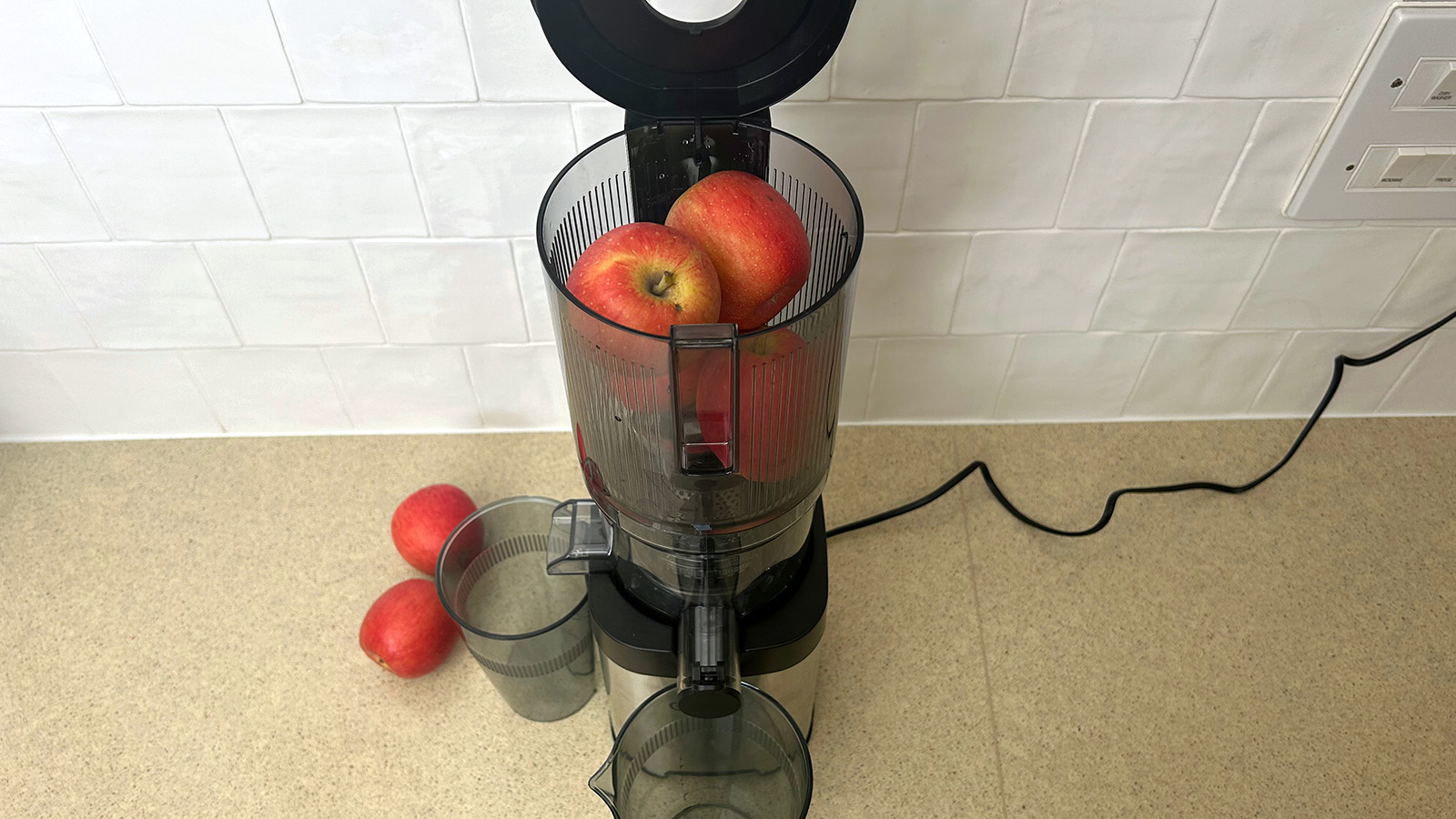
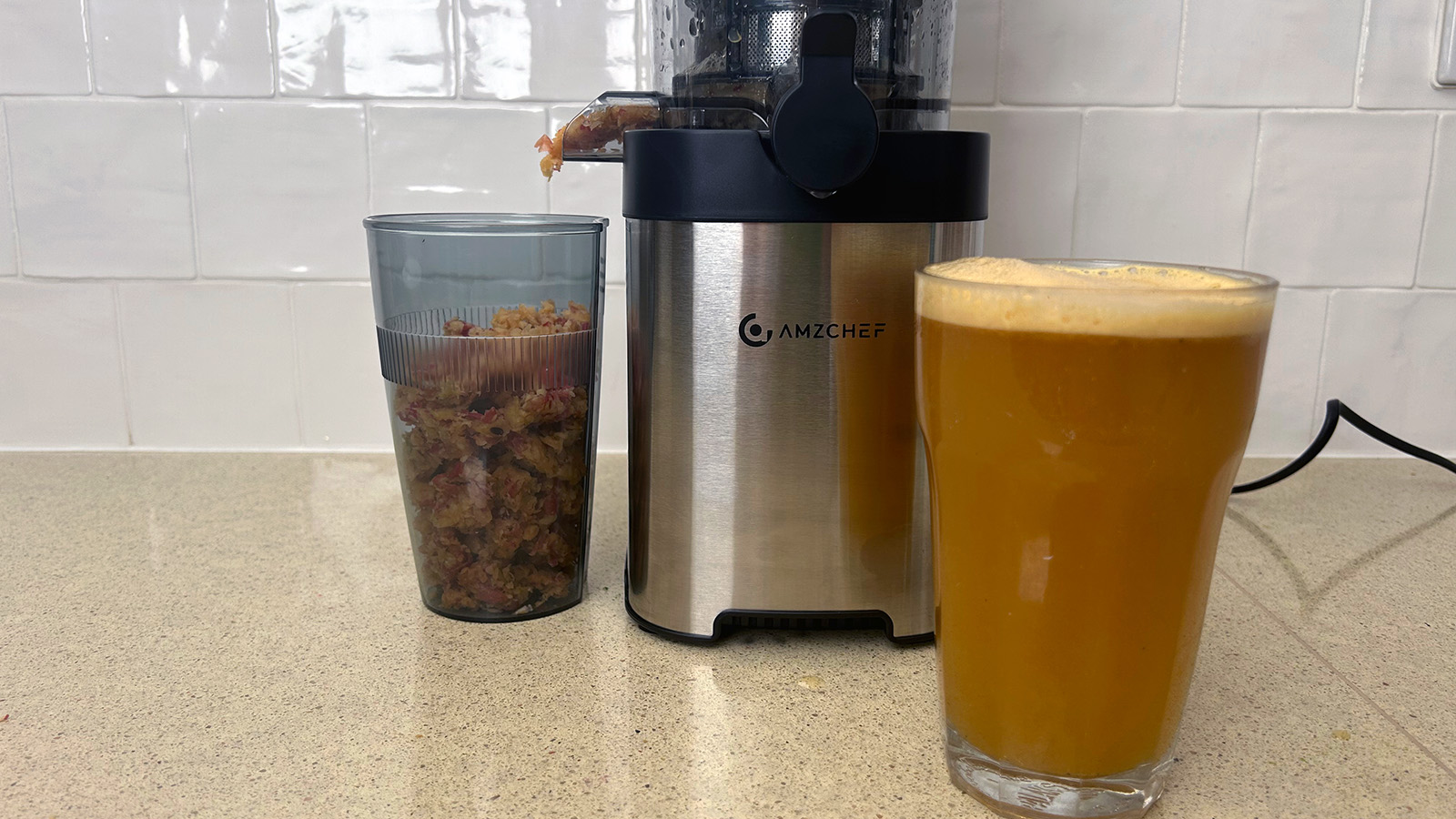
For this I simply fed in six whole red apples, luckily each time you open the lid to pop another apple in, the juicer stops for safety. It took around three minutes to get through all the apples, which wasn’t too bad since I didn’t have to spend any time preparing them in advance.
The apple juice was very sweet and smooth, it had a layer of foam on top but you could scrape it off if you want to. The six apples weighed 25oz/ 719g and the juice weighed 19oz/ 540g which equates to a 75% yield, which is one of the best I’ve achieved with this juicer.
Carrot and ginger juice
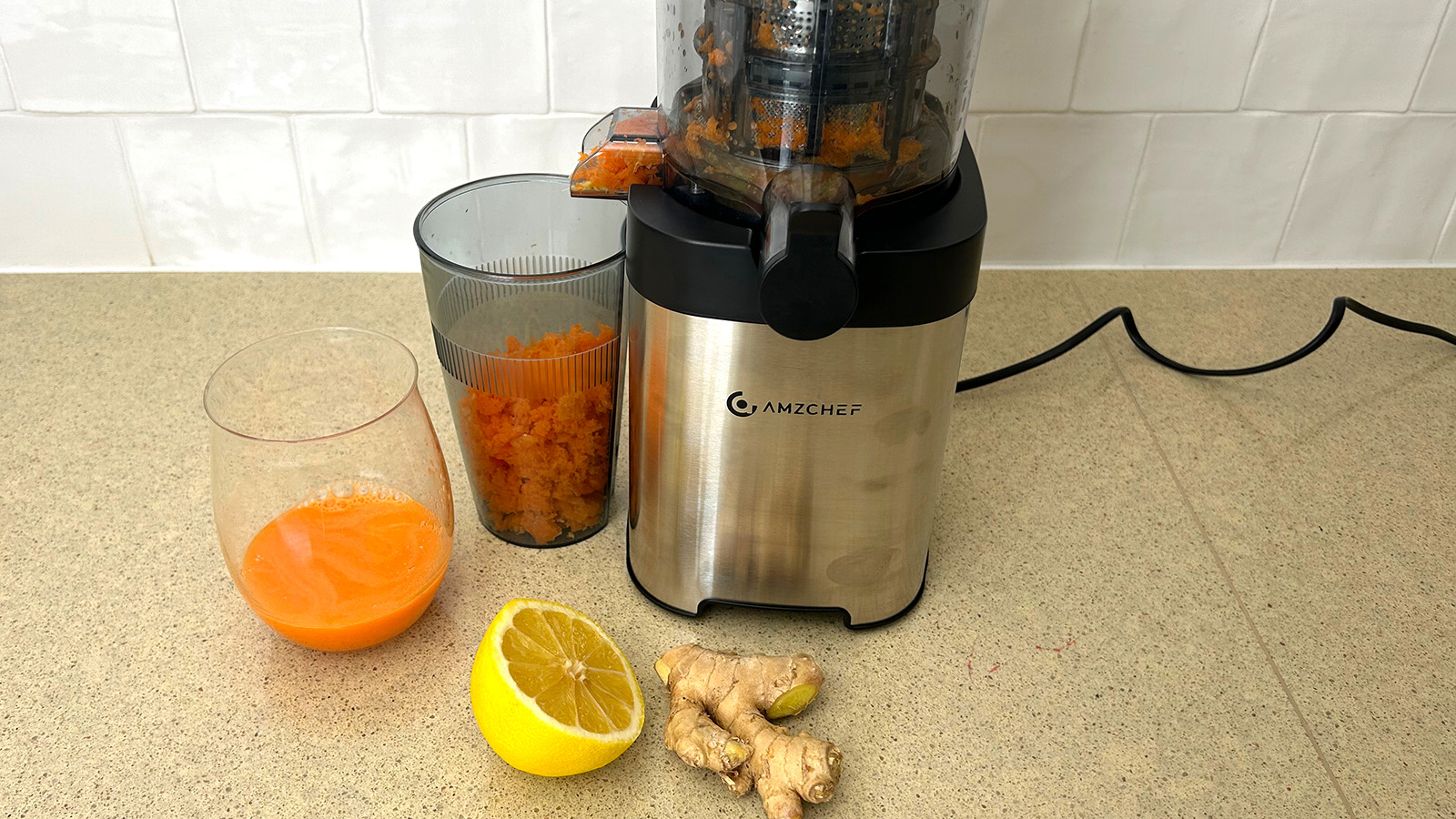
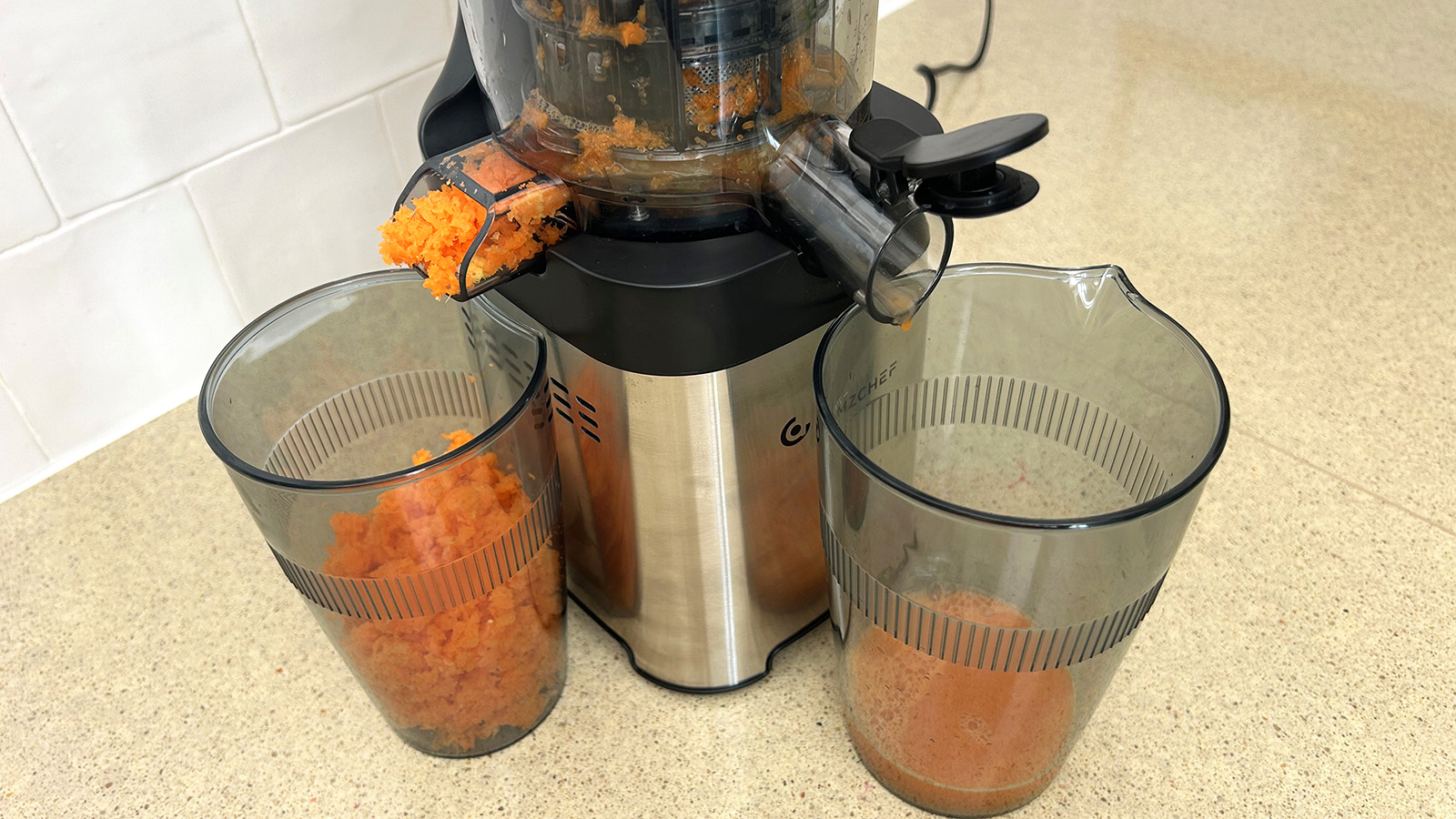
Next up I tried my luck with a zingy carrot and ginger juice. The instruction manual that came in the box says that for large foods like carrots, I need to cut them into small pieces before putting in. It would be helpful if they defined small though.
In the end I cut the four carrots into roughly 2 inch pieces, give or take. I also added half a peeled lemon and a small piece of ginger with its skin still on. It was all juiced in under 1 ½ minutes.
There was no froth on the juice, but again there was more waste than I hoped for. My 8.1oz/ 230g raw fruit and veg only gave me 2.8oz/ 80g juice which is about a 35% yield.
The juice was a zingy early morning wake up call. And though it tasted clean and fresh, there were some small gritty bits of carrot that meant the texture wasn’t 100% smooth. I’m fine with this texture, but if you’re fussy about producing a drink with absolutely no bits, this may bother you.
Spinach, celery and apple juice
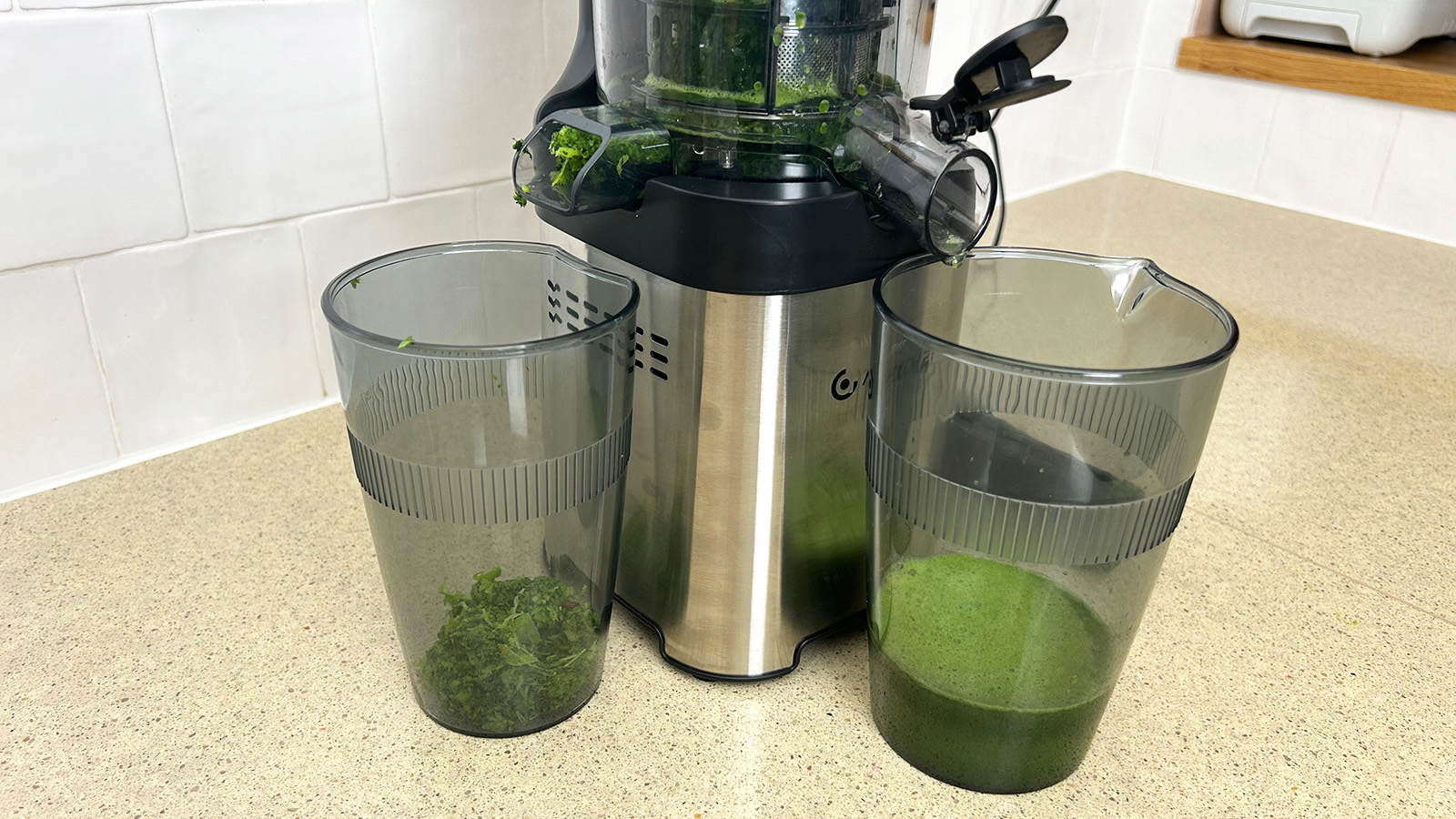
A QR code on a leaflet in the box led me to a huge range of online juice recipes from AMZCHEF. And despite its awful name, I followed one called ‘tranquility of spinach’. Essentially it’s a large handful of spinach, a couple of celery stalks and a whole green apple.
It was juiced in a little over two minutes, but some pieces of celery and spinach got stuck to the blade so I did have to open it up and push them in the right direction. The pulp was noticeably dryer than any of the previous juices I’ve made. And the 68% yield is pretty good.
The vibrant green juice looked like health in a glass. There was a small amount of foam on top, but it wasn’t gritty like the carrot juice. It was smooth, fresh, and clean tasting, in fact I enjoyed the flavor far more than I expected to.
Beet, carrot, apple, and ginger juice
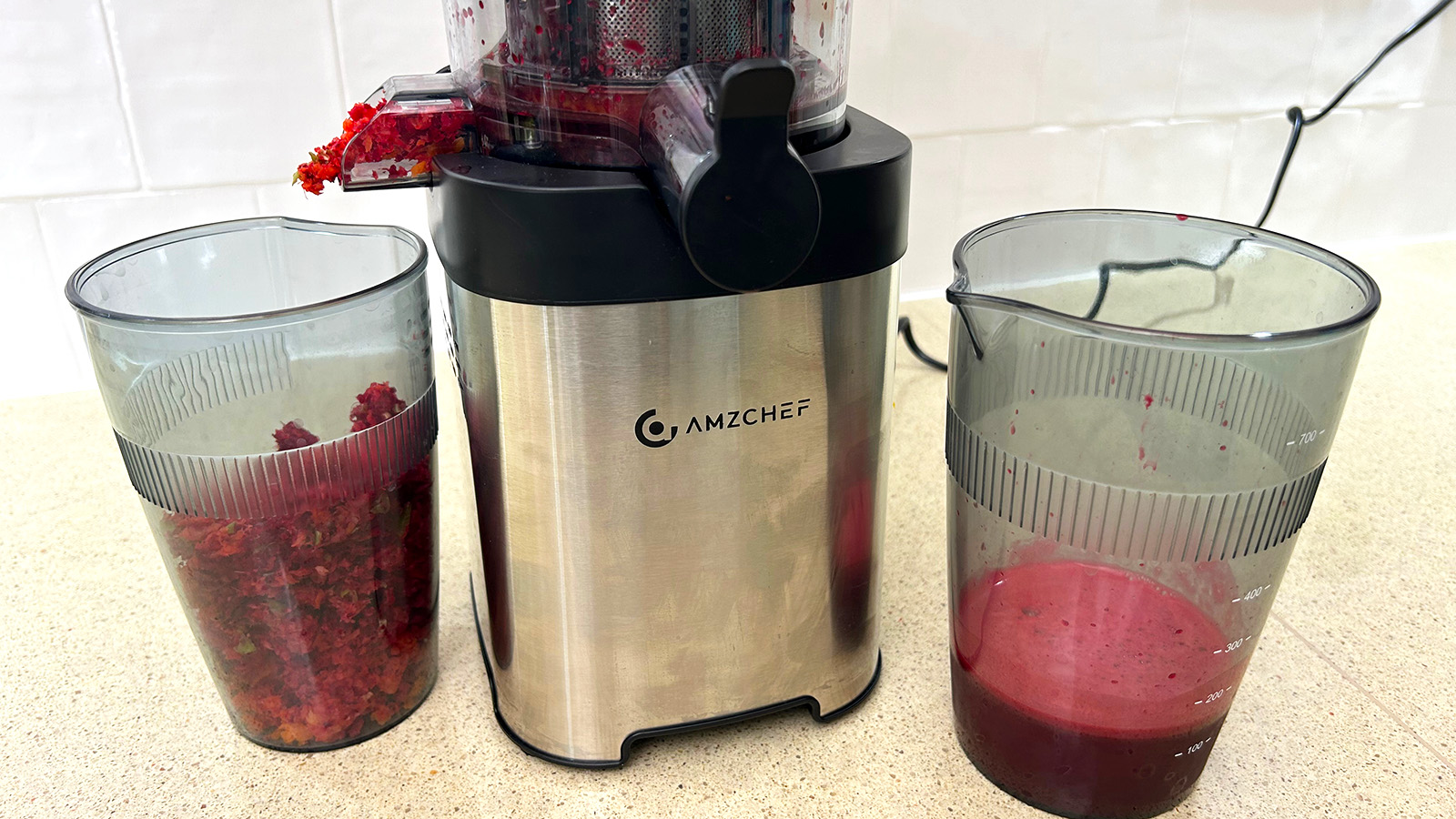
This was another recipe from AMZCHEF called ‘carrot rhapsody’. It’s a whole beetroot (peeled and quartered, 2 carrots, 1 inch of ginger and a whole green apple. The yield was pretty much bang on 50% so again, there is a fair bit of waste.
The result was a sweet, spicy, and earthy juice with a vibrant beetroot color. It wasn’t completely smooth, there was some grittiness from small pieces of pulp. But I couldn’t help feeling like this brightly-colored drink was giving me a boost of goodness.
It’s not as loud as some juicers I’ve reviewed. My noise meter registered a maximum of 80dB, but it’s not this loud all the time, it very much depends on what you’re juicing.
Cleaning
No part of this juicer can go in the dishwasher, so the included cleaning brush comes in very handy. The juice and pulp containers are just plastic cups so rinse clean easily. Similarly the long pusher is an easy clean.
The juicer mechanism comes apart into four pieces, so there aren’t loads of fiddly parts to clean, but you do have to be prepared to stand at the sink diligently rinsing them all under running water until all the pulp and fibers have gone.
Furthermore, the stainless steel base marks quite easily with fingerprints, so it requires a bit of buffing to keep it looking pristine.
AMZCHEF Cold Press Juicer review: Comparison
The Nama J3 is a high ranking cold press juicer in our list of best juicers, and it has a similarly large feeding chute compared to the one you'll find on the AMZCHEF. Our Homes Editor found it to be particularly user friendly, and it’s easy to clean. It's also worth noting that it looks undeniably better than the AMZCHEF on the kitchen counter. Plus, unlike the AMZCHEF it comes with two strainers for different pulp levels. However, it's about 3 times the price of this Amazon juicer, so you’ll need to be seriously into juicing to justify it.
Alternatively, if you’re on a tight budget and you don’t mind opting for a centrifugal juicer instead of a cold press juicer, the Nutribullet Juicer is worth consideration. Not only is it affordable, with a sub $100 price tag. But it’s easy to use with a practical design that’s great for newbie juicers.
AMZCHEF Cold Press Juicer review: Verdict
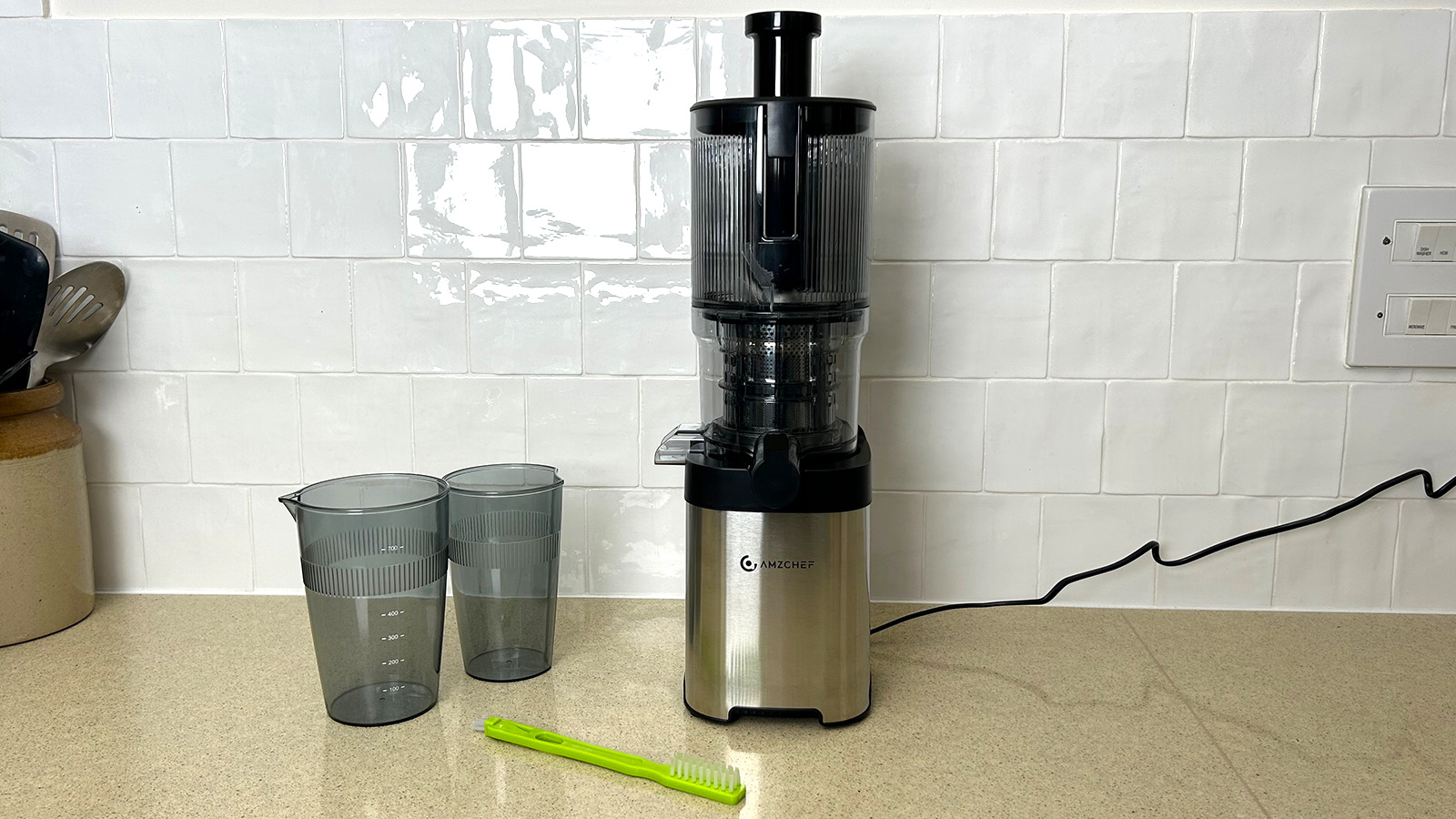
Taking everything into consideration, I’d say that this is a great entry-level cold press juicer for those who are just getting into juicing but don’t want to fork out several hundred bucks for one of the most premium models. Likewise, if you only juice occasionally, it makes more sense to buy an affordable juicer like this one.
The compromise is that it doesn’t produce the highest juice yields. So if you get really into juicing on a regular basis, you might want to upgrade later down the line in order to reduce wastage and squeeze the absolute maximum liquid from all your fresh produce. But for the price, you'll struggle to get a cold press juicer that's as user-friendly as this one.







